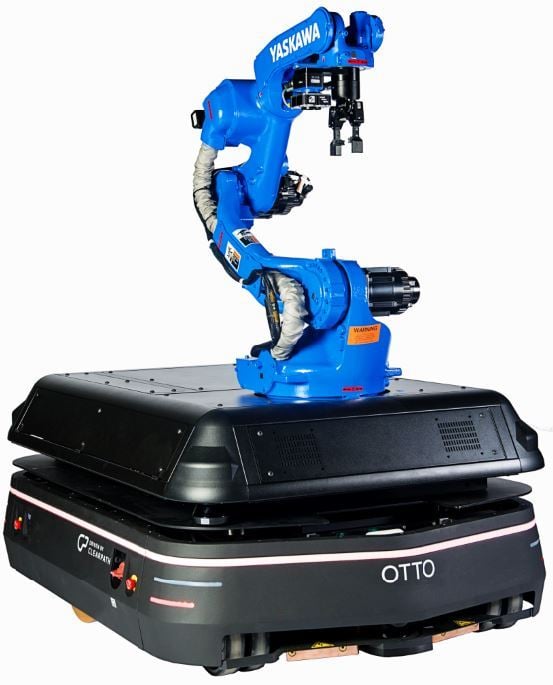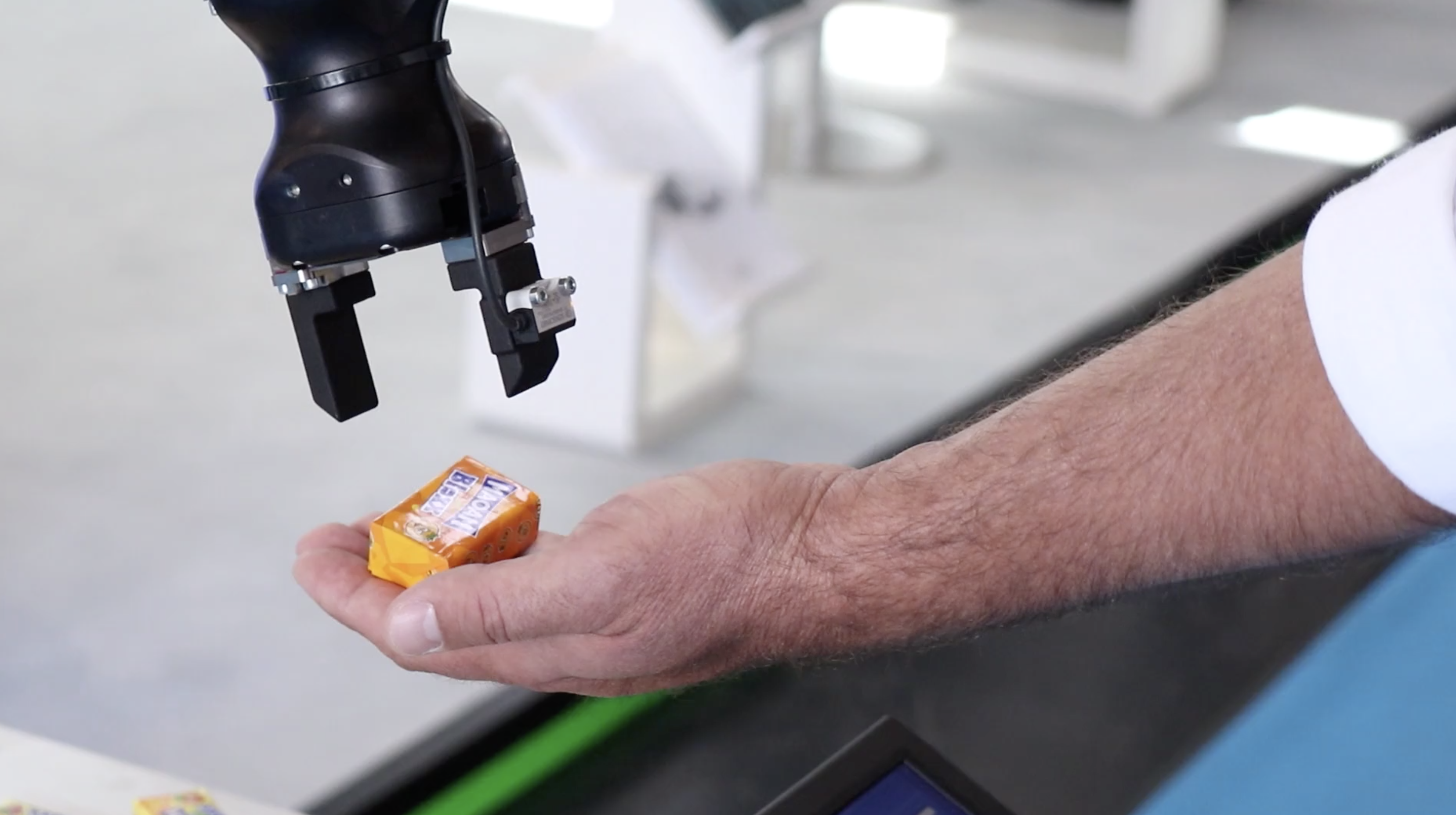How to Decide If You Need a Mobile Cobot

Posted on Dec 19, 2018 7:00 AM. 5 min read time
There are some situations where a mobile collaborative robot will outperform a standard cobot. Here's how to decide if your situation is one of them.
 Solution for mobile machine developped by YASKAWA and OTTO Motors : Mobile Robot YMR12
Solution for mobile machine developped by YASKAWA and OTTO Motors : Mobile Robot YMR12
Mobile cobots are probably the next big step in collaborative robotics. They are already on the market and beginning to make their way into businesses just like yours.
But, you might be wondering: Are mobile cobots are really worth it for my specific situation?
It's a good question. You don't want to invest in a mobile autonomous robot unless it's definitely going to improve your processes.
Here's how you can find out if added mobility is suitable for your business.
Why you might want a mobile collaborative robot
A basic mobile cobot consists of a collaborative robot manipulator mounted onto a mobile autonomous base. It provides all the advantages of these two individual technologies, with the added benefits of mobile manipulation.
In our recent article, Mobile Collaborative Robots: The Next Big Thing, we introduced some of the general benefits of mobile cobot technology, including: reduced hands-on time for changeovers, reduced downtime, and better use of space. Although the benefits look promising, the real question is whether they are worth it for your unique situation. This all boils down to whether extra mobility will improve your robot's performance for your unique task. And, if so, by how much.
As we will discuss below, there are often cheaper solutions which are easier to implement and achieve similar benefits. However, some applications can be greatly improved by giving extra mobility to your robot.
5 Situations which benefit from added mobility
Here are some examples of situations where a mobile collaborative robot would outperform a standard cobot.
1. Many small automation tasks
At Robotiq, we often talk about the fact that collaborative robots are very agile. This means that they are easy to repurpose for new tasks. As a result, users often move cobots between tasks multiple times a day.
The problem with this is that changeovers require a human to move the robot. If you find yourself dragging your robot between many, small tasks every day, it might make sense to add a mobile base.
2. Consistently small batch sizes
If your robot is being used to process large batch sizes, it is likely that a single task will take up most of its day. In this case, a mobile base is unlikely to add any extra benefits as the robot will be static for most of the time.
However, if the robot consistently processes small batch sizes it is likely to move between tasks a lot. In this case, a mobile base might make sense for the same reasons as above.
3. Pick, transport and place
Pick and place is one of the most common tasks for cobots. As the name suggests, it involves picking up an object and placing it elsewhere in the robot's workspace. A mobile cobot can be useful if the drop-off location is very far away from the pick-up location, e.g. when picking orders from a warehouse of shelves.
4. Very large workspaces
Large workspaces are the norm in the logistics sector. This sector is currently a huge driver for robotic adoption, as we discussed earlier this year. There are already several mobile cobots which are aimed at logistics applications. For example, the IAM Swift Solution was one of several mobile picking robots shown at this year's MODEX 2018 in November.
If your robot needs to operate in large workspaces, added mobility can be a real help.
5. Completely automated workflow
Most cobot users want to combine their robotic tasks with manual tasks carried out by human workers. This is exactly what cobots are designed to do. However, you might want to convert a complete process to cobot automation.
To achieve a completely automated workflow, you would need to automate the transportation of objects between workstations. A mobile base is one way to do this, though not the only way.
How to assess your application for a mobile cobot
If a mobile cobot sounds like it might improve your situation, use the following 5 steps to gain a better understanding of the suitability of a mobile cobot in your workplace.
1. List how many tasks the robot could do
Mobility is most useful when the robot moves between several tasks. Start by listing all the tasks in your workspace which the robot could achieve.
Could a mobile base be used to move the robot between several of these tasks?
2. Assess each task for cobot suitability
Not all tasks are suitable for cobots. You will need to assess each potential task to find out if it can be achieved by a collaborative robot. We outline this process in detail in our eBook series Getting Started With Collaborative Robots, which we recently updated.
3. Assess the extended workspace
Adding a mobile base to your robot has the effect of increasing its workspace. Normally, a cobot's workspace only contains its immediate surroundings. With a mobile cobot, the workspace stretches to the entire workfloor.
Roughly map out the whole area which the mobile cobot could reach. Notice any obstacles which may restrict its movement.
4. Monitor time it takes to switchover
One of the benefits of mobile collaborative robots is that they reduce the hands-on time required for changeovers between tasks.
Calculate the time that it currently takes to move the robot between tasks, including any time when the robot sits idle after it has finished its first task. This can be very easy to achieve using Robotiq Insights by looking at the robot's utilization during the changeovers between tasks.
5. Consider other solutions
A mobile base is not the only solution. In fact, it may be overly complicated for your situation.
Before you invest in an expensive mobile robot, think of other potential solutions to your current problems.
For example:
- If your cobot is already close to capacity with one or two tasks, it may make more sense to invest in a second cobot.
- If you want the robot to travel so it can pick up objects from a shelf, there might be a simpler way to achieve this, e.g. move the robot cell closer to the shelf and reorder the objects.
- If you want to transport objects from one robot cell to another, a conveyor might be a viable option.
If you have assessed the other solutions and found that a mobile cobot really is the best solution, great! You can join the growing number of businesses who are already adding mobile collaborative robots to their processes.
What could you achieve by adding a mobile cobot to your business? Tell us in the comments below or join the discussion on LinkedIn, Twitter, Facebook or the DoF professional robotics community.






Leave a comment